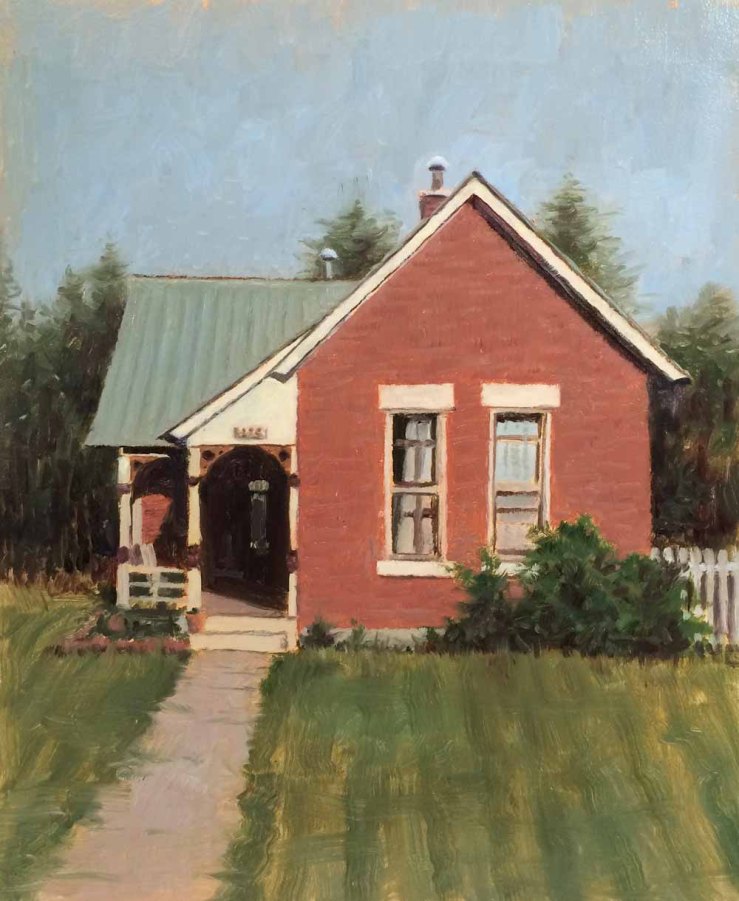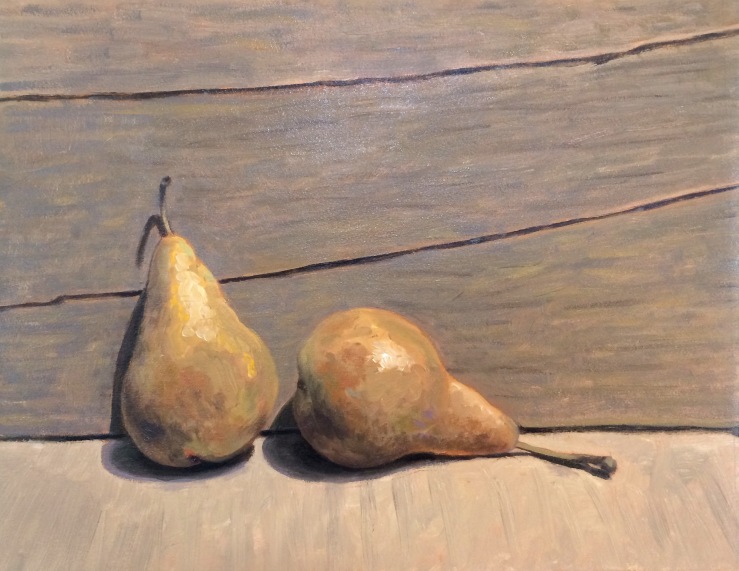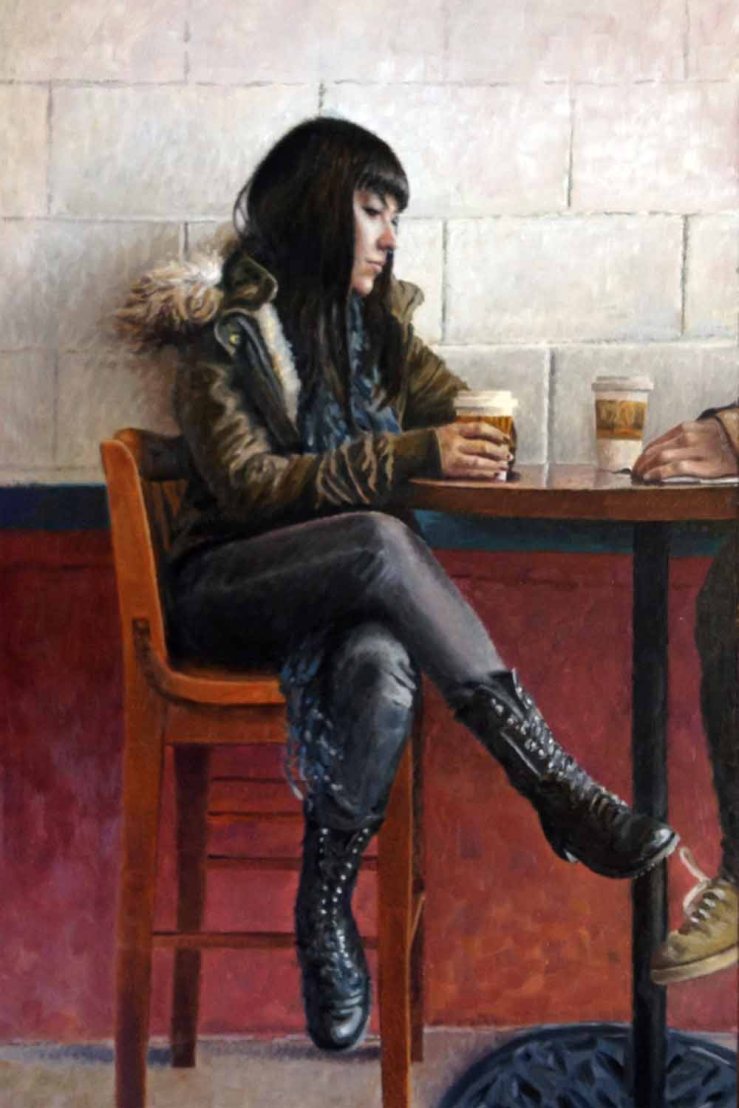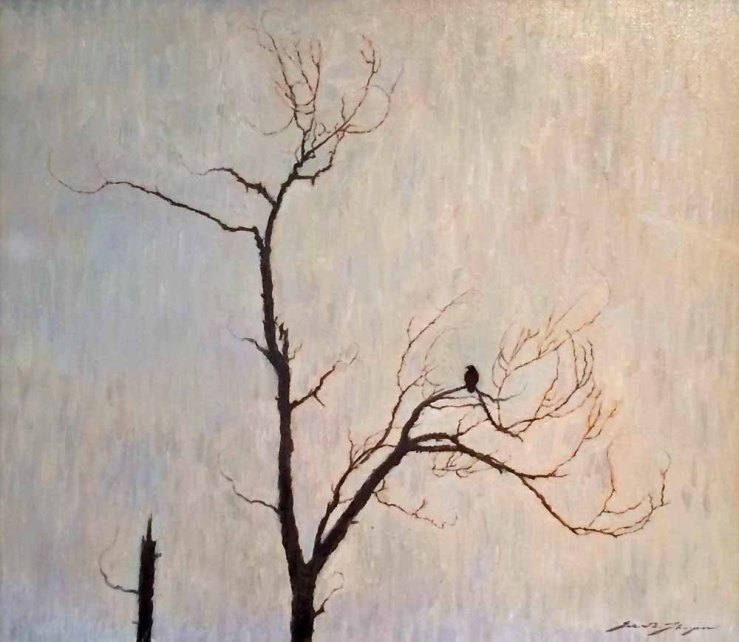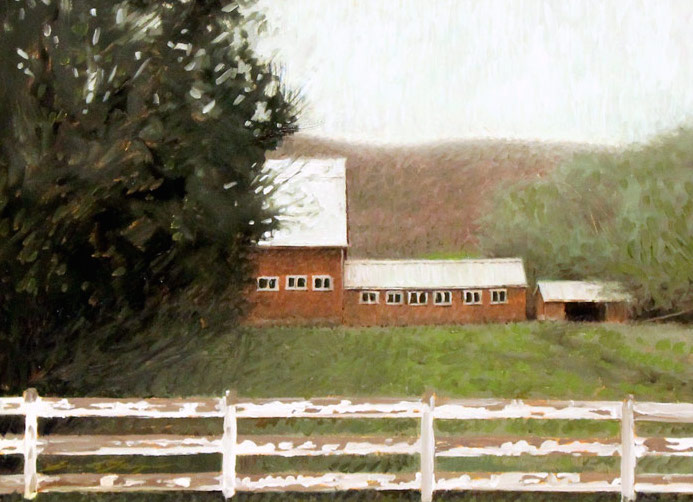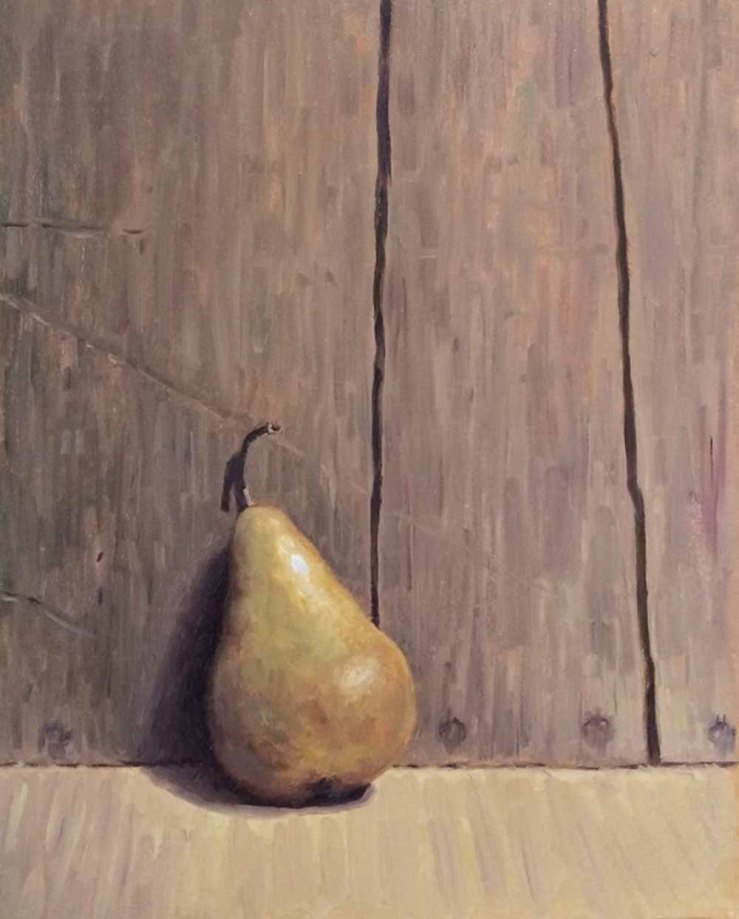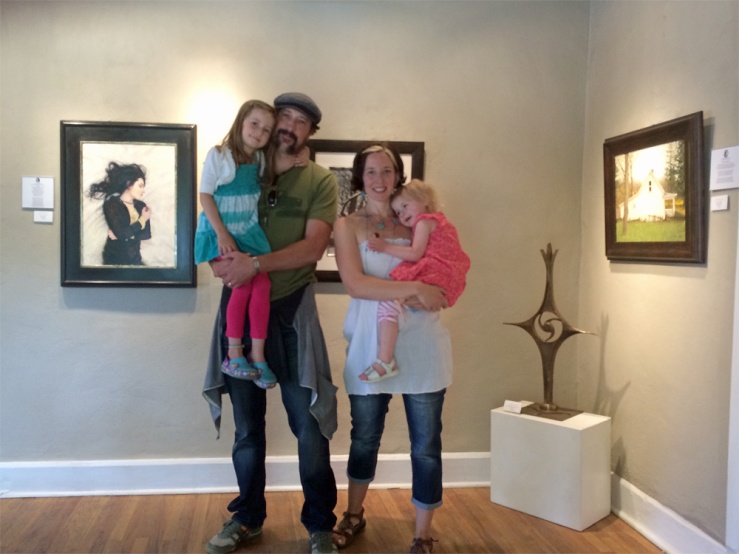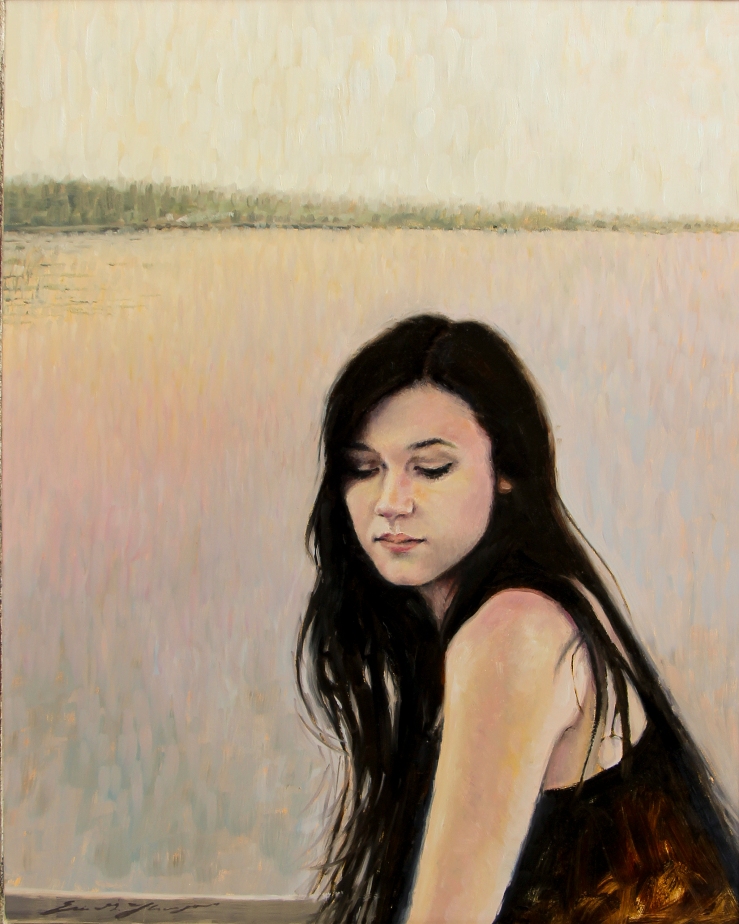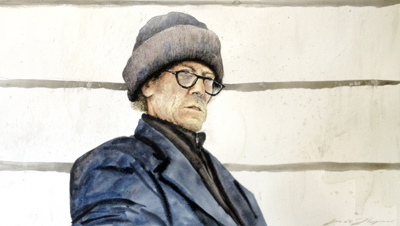Eric G. Thompson‘s new series of contemporary realist paintings arrived yesterday. As we pulled them from the box one by one, silenced by their cool gravitas, we saw them in a whole new way. First came a solitary bird in a tree, silhouetted against a pale sky. Was he watching the pensive girl strolling through the field that emerged from the package next? Perhaps she was headed to the barn in the following image, where she’d sit and munch on the late-summer pear in the still life. It was as though we were opening an intricate matryoshka doll, with each picture adding a new layer of details to the story.
Light flows across Thompson’s canvases and panels like meditative thoughts, revealing an endless array of materials with diverse textures and reflective qualities. As a self-taught artist, Thompson learned to capture all of these effects through looking, painting and looking again. When you come to the opening reception for Eric G. Thompson: New Works at Matthews Gallery this Friday, August 14 from 5-7 pm, make sure to take just as much care as you ponder each composition (and perhaps find connections between them). Here’s a special preview:
Eric G. Thompson, The Watch, Oil on Linen
Eric G. Thompson, Santa Fean Girl, Oil on Linen
Eric G. Thompson, Freshly Mowed, Oil on Linen
Eric G. Thompson, A Pair, Oil on Linen
Eric G. Thompson, Winter Bones, Oil on Canvas
Eric G. Thompson, Over Lattes, Oil on Panel
Eric G. Thompson, Perch, Oil on Linen
Eric G. Thompson, Grace, Oil on Linen
Eric G. Thompson, Cool Morning, Oil on Panel
Eric G. Thompson, Bosc, Oil on Linen
Click here to see more of Thompson’s work, and connect with us on Facebook, Twitter and Instagram for more gallery news.



